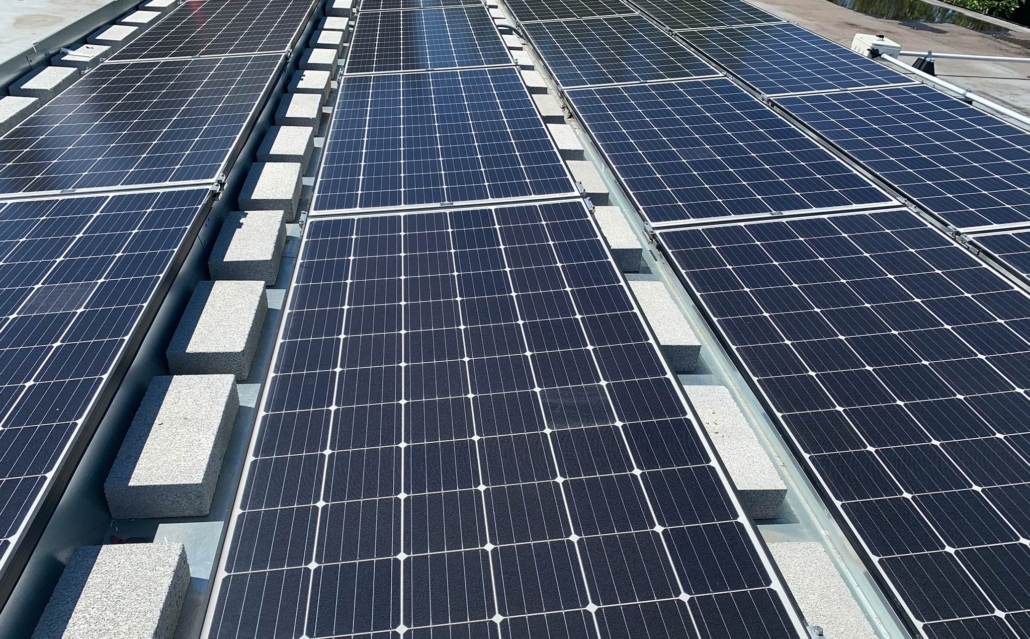Ohio-based Roll-A-Rack announced it has developed a roll-forming solar racking system that captures rainfall on solar panels. Harvested rainwater can be used for irrigation. The product is designed for flat roofs or ground-mounted systems.
The compact system requires only eleven inches between rows of panels, significantly cutting down the amount of space that is normally required for erosion control by planting vegetation. The company said the solution requires half the land to produce the same amount of energy as conventional racking systems.
The product is currently under development and was launched by a Small Business Innovation Grant from the US Department of Energy Solar Technologies Office.
Don Scipione, president of Roll-A-Rack will introduce the innovation in a presentation, “Stormwater Management for Solar Arrays” at the Ohio Department of Natural Resources 2022 Ohio Statewide Floodplain Management Conference, Aug. 24 to 25, in Columbus, Ohio.
The rain harvesting feature of the rack adds on to Roll-A-Rack’s innovative design, which is centered around its roll-forming installation machine that performs similarly to gutter installation devices. The design has direct implications for membrane flat roofs, which are generally unable to house solar arrays due to the need for making penetrations that compromise the roof’s structure.
To avoid damaging the structural integrity of a membrane roof, the company installs a 12-inch metal channel rack that is distributed across existing roof ballast while securing the solar panels. The rack can be as thin as 22-gauge, and roll-formed. Roll-A-Rack said it supports 50 psf snow loads and 37.5 psf wind uplift. The company said automated install is feasible for its product.
Roll-A-Rack said its solution reduces racking and installation costs of traditional systems by 30%. It said the material costs are 50% less than conventional racking systems, and that installation time and labor costs are reduced by 65%.
The company is currently taking applications for beta testers of the product, with applications ending this month. The first 100 kW of racking will be provided for free, and operations staff will be trained at no cost. The test site would become a case study for the company, and the facility may be used for marketing purposes.
This content is protected by copyright and may not be reused. If you want to cooperate with us and would like to reuse some of our content, please contact: editors@pv-magazine.com.









This looks like a great idea for over buildings, parking lots and other unusable for plants areas to support adjacent area’s plant growth WHEN THERE ARE WATER RESTRICTION LIKE WHAT IS GOING ON NOW IN THE SOUTHWEST USA. Some water utilities are paying for people to install rain barrels and this system could fill those with ease.